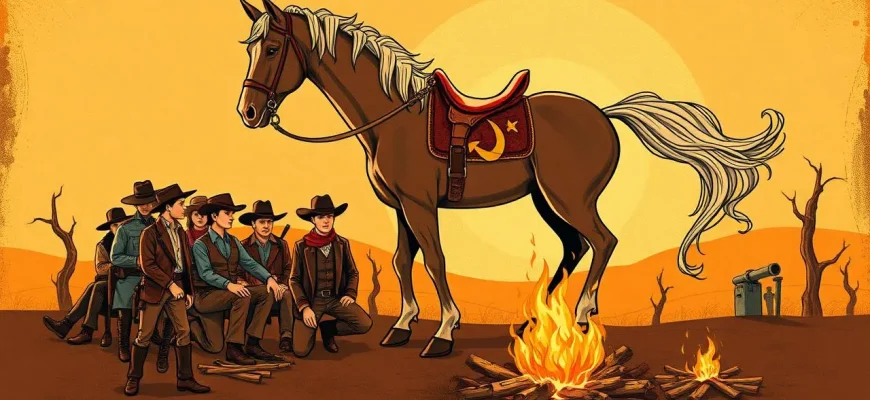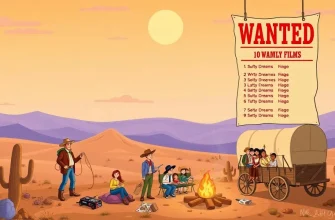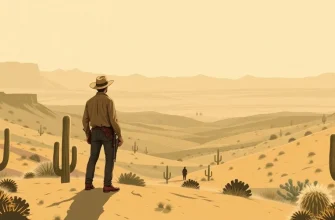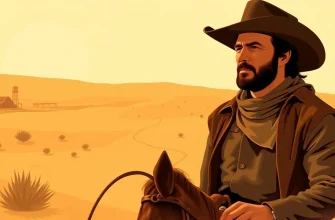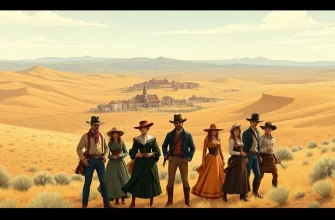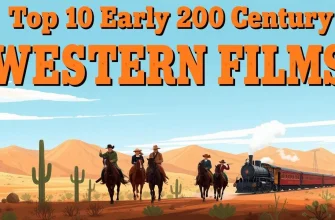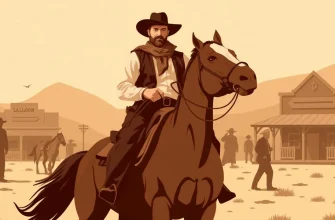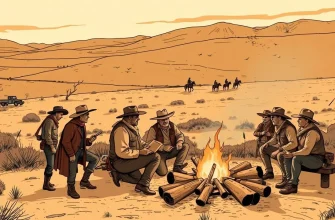Soviet Westerns represent a fascinating blend of the traditional Western genre with the ideological and cultural nuances of the Soviet Union. These films offer a unique perspective on the Wild West, often incorporating themes of class struggle, anti-imperialism, and the portrayal of Native Americans in a more sympathetic light. This collection not only provides entertainment but also serves as a cultural bridge, showing how Soviet filmmakers adapted and reinterpreted a genre typically associated with American cinema.
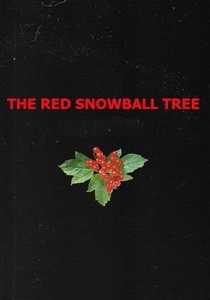
The Red Snowball Tree (1974)
Description: While primarily a drama, this film includes elements of the Western genre through its portrayal of a man's struggle against societal norms and his quest for personal justice.
Fact: The film was directed by Vasily Shukshin, who also starred in it, making it a deeply personal project.
 Watch Now
Watch Now
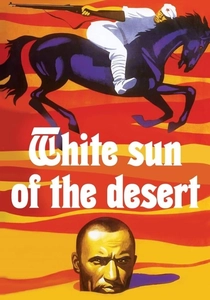
White Sun of the Desert (1970)
Description: Although set in Central Asia, this film captures the essence of a Western with its desert landscapes, bandits, and a lone hero, albeit with a Soviet twist where the hero fights against the remnants of the Basmachi movement.
Fact: The film's theme song became a cultural phenomenon in the USSR, often played at cosmonauts' launches as a good luck charm.
 Watch Now
Watch Now
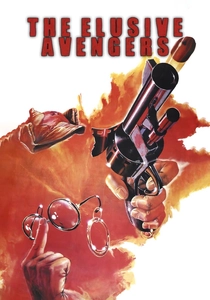
The Elusive Avengers (1966)
Description: This film is a Soviet take on the Western genre, focusing on a group of young partisans fighting against the White Army in the Russian Civil War, which parallels the themes of resistance and justice found in traditional Westerns.
Fact: The film was so popular that it spawned two sequels, making it one of the most beloved Soviet adventure series.
 30 Days Free
30 Days Free
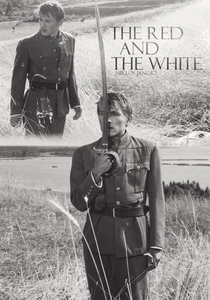
The Red and the White (1967)
Description: This Hungarian-Soviet co-production uses the backdrop of the Russian Civil War to explore themes of loyalty, betrayal, and the fight for survival, reminiscent of Westerns.
Fact: It was directed by Miklós Jancsó, known for his long, uninterrupted takes, which add to the film's intensity.
 30 Days Free
30 Days Free

The Red Tent (1969)
Description: While not a traditional Western, it features elements of adventure and survival in harsh environments, akin to the survivalist themes in Westerns, set against the backdrop of the Arctic.
Fact: The film was a co-production between the USSR, Italy, and Yugoslavia, featuring international stars like Sean Connery.
 30 Days Free
30 Days Free

The Seventh Bullet (1972)
Description: This film directly emulates the Western genre with its story of a lone gunman seeking revenge, set in the Soviet Central Asia, showcasing the cultural and ideological clash.
Fact: It was one of the few Soviet films that openly adopted the Western genre's style and narrative structure.
 30 Days Free
30 Days Free

The Return of the Elusive Avengers (1968)
Description: Continuing the adventures of the young partisans, this sequel further explores themes of justice and resistance, akin to the moral dilemmas faced by characters in Westerns.
Fact: The film was shot in color, unlike its predecessor, enhancing the visual storytelling.
 30 Days Free
30 Days Free

The Crown of the Russian Empire (1971)
Description: This film, while not a Western in setting, captures the spirit of adventure and exploration, akin to the exploration of new frontiers in Westerns.
Fact: It was one of the first Soviet films to be shot in the newly independent African nations.
 30 Days Free
30 Days Free

The Scouts (1968)
Description: Set during the Russian Civil War, this film uses the Western genre's conventions to tell a story of espionage and survival, with scouts acting much like the lone heroes of the West.
Fact: The film was praised for its realistic portrayal of the harsh conditions of the Civil War.
 30 Days Free
30 Days Free

The Burning Miles (1957)
Description: Although not a Western in setting, it captures the spirit of adventure and the fight against adversity, themes common in Western narratives.
Fact: The film was one of the first Soviet productions to be widely distributed internationally.
 30 Days Free
30 Days Free

